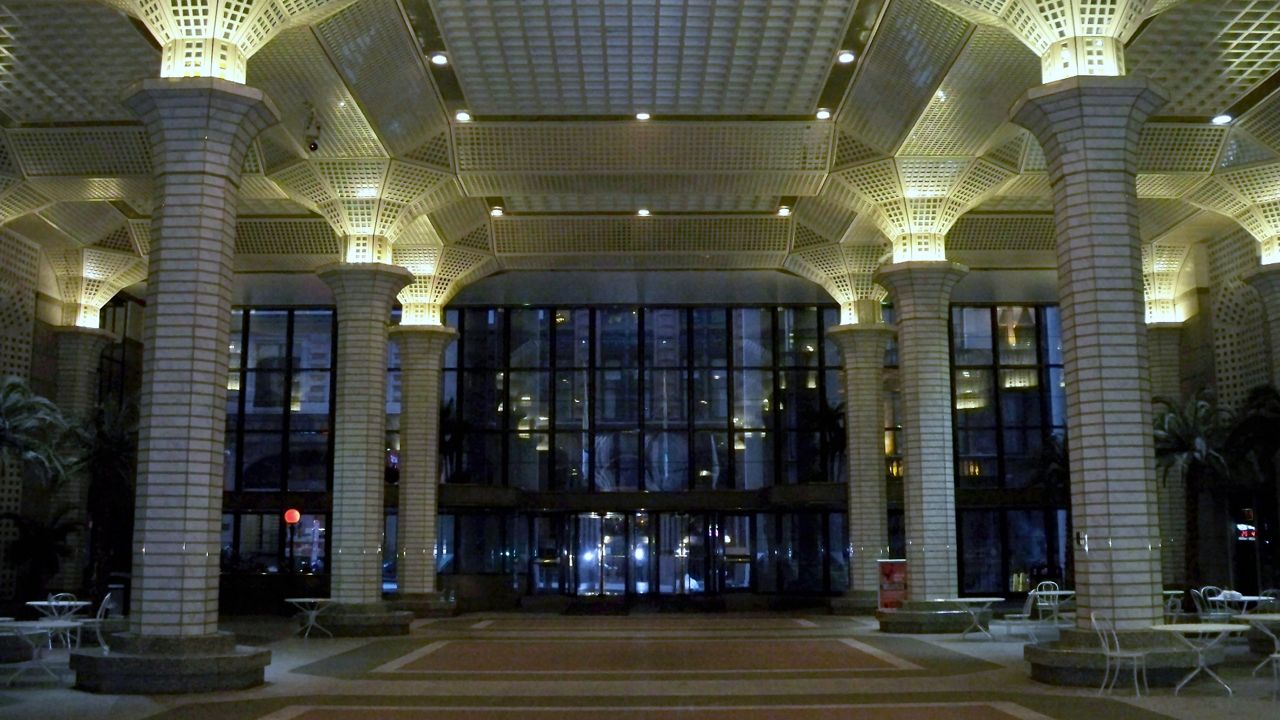The high atrium at the bottom of 60 Wall Street has survived another brush with demolition, after the Landmarks Preservation Commission decided Tuesday to take no action on whether to approve a developer’s renovation plan for the tower’s bottom floors.
The postmodern lobby is known for tall, tree-like stone pillars, and looks more like a discarded set from “2001: A Space Odyssey” than the entrance of a Financial District office tower. A renovation plan for the building’s street-level exterior from the Paramount Group, a real estate trust, would have included stripping the lobby, which leads to a subway station entrance.
After a June commission meeting that also rejected an earlier design, the developers proposed changes to the facade that they said would bring it more in line, architecturally, with a sister building, 55 Wall Street, known for massive, Greek-style pillars that tower over the outdoor seating area of the restaurant Cipriani.
The changes Paramount’s architects proposed were limited to the building’s exterior, and would add more and larger columns to its colonnaded entryway, while still proposing to overhaul the lobby.
In the Tuesday meeting, however, the commissioners largely rejected the changes, saying they were not “harmonious” — the body’s term-of-art for approving changes to significant buildings — with the existing tower or nearby facades.
“As vague and hard to pin down a word as that is, I don't think this does it,” Michael Goldblum, a commissioner, said in the meeting.
Frederick Bland, a vice chair of the commission, called the renovation plan of the lobby a “disembowelment.”
Two commissioners, out of the body’s 11, said they supported Paramount’s changes.
“I do think these refinements help the project a lot, and I remain sympathetic to this notion that we have to make our office buildings work so they are marketable,” said commissioner Jeanne Lutfy.
Based on the opposition to the design, the commission’s chair, Sarah Carroll, decided to take no action, neither approving the redesign nor rejecting it. The decision affords the developers another chance to reconsider the design in the hopes of receiving approval from the commission.
The lobby is a unique case for the commission, since it is relatively young — completed in 1989 — and is not landmarked. But since the original design received approval from the commission when it was first proposed, the body retains some control over the building’s facade.
In a tweet, the modernist preservation group Docomomo cheered the non-decision, calling it a victory.
“The decision today does not protect the building or its interior but allows for more discussion to hopefully move in that direction,” the group said.
In an emailed statement, a spokesperson for the project said: "We are carefully reviewing the LPC’s comments, and are confident that the reimagined 60 Wall Street will meet the needs of today’s discerning office tenants. We look forward to continuing this dialogue and investing in the future of the iconic 60 Wall Street and New York City."








